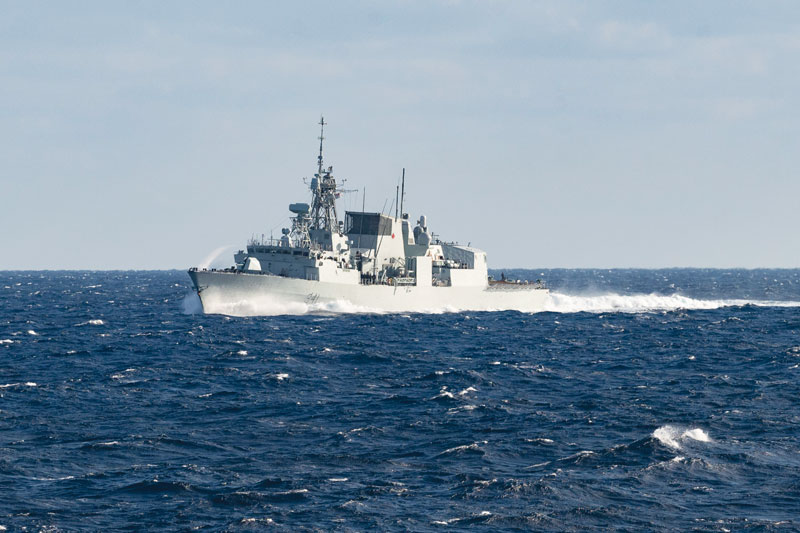
Last fall, Vice-Admiral Angus Topshee, commander of the Royal Canadian Navy, released a YouTube video warning that the navy is in a critical state with old ships and a serious shortage of sailors to operate them. He also told a defence leadership symposium that the navy “could fail to meet readiness commitments.”
Topshee’s message can’t be a surprise to anyone who has watched the decline of the RCN during the last two decades. For a nation as dependent as Canada is on maritime trade—at least 20 per cent of the country’s $757.4 billion in exports travel by sea—the navy’s collection of small-but-highly-capable modern Halifax-class frigates, old-but-still-functioning command destroyers, Kingston-class coastal defence vessels, obsolete British-built, diesel-electric submarines, and oiler/replenishment vessels was a minimum requirement. Today, that minimum can’t be reached. And it won’t be for at least another decade, if not longer, based on the current plans for upgrades and replacements.
The frigates, while trusty, are now out-of-date, as are the Kingston-class vessels. Plus, there’s currently only one oiler/replenishment ship, a converted merchant that’s barred from any conflict zone; the submarines are barely functioning, having tallied just 228 sea days combined since 2019, and while there are two new Arctic offshore patrol vessels in service, they can’t operate in the winter and they have already encountered problems with engine-cooling and drinking-water systems. On top of the equipment shortcomings, the navy is 1,200 personnel short of requirement, with vacancy rates in some positions above 20 per cent.
It’s bold for Admiral Topshee to tell the public how bad the situation is. But it may be worse: none of the projected replacement vessels—two new oiler/replenishment ships and 15 surface combatant vessels, are even being built yet. And while the navy is pushing for new submarines, there seems to be no plan for acquiring them, or ensuring that they can operate under ice—a critical function for working in the Arctic. Canada’s navy is falling to pieces. And nothing but money—boatloads of it—can save it.
Canadians can blame the country’s sclerotic military procurement program for the problem. But even if that mysterious witches’ brew of a challenge was solved, the basic issue would remain. For decades, Canada has consistently prioritized social welfare programs, such as dental and pharma care, over defence. Indeed, national security isn’t treated with any urgency. In fact, the defence budget is slated for a nearly $1-billion cut.
Canadians choose every day to live in this wonderful country, but the politicians they vote for don’t spend as much as they could on defence and all three services suffer the consequences. So, why not let it all go, save some money and nestle under the tender wings of the United States? The Americans fund defence at a far greater rate anyway.
Canadians can blame the country’s sclerotic military procurement program for the problem.
A fine idea in theory, but perhaps not in execution. In a Wall Street Journal article published last December with the headline “The U.S. Can Afford A Bigger Military. We Just Can’t Build It,” Greg Ip argued, in a nutshell, that China can build ships far more quickly than the Americans.
“In terms of industrial competition and ship building, China is where the U.S. was in the early stages of World War II…we just don’t have the industrial capacity to build warships…in large numbers very fast,” Ip was told by Eric Labs, a navy analyst for the U.S. Congressional Budget Office.
What that means for Canada is simple. Add Canada’s Pacific, Atlantic and Arctic coasts—combined, the longest coastline in the world—to the U.S. Navy’s areas of responsibility and its capacity to watch, guard and defend would shrink its overall ability dramatically. And that’s not even accounting for the U.S. Navy’s current global commitments. It would get stretched very thin very fast, particularly when China is outbuilding the U.S. every year.
Should Canadians not shoulder a reasonable share of responsibility for the defence of the country’s own waters? Does Canada not need to contribute to guarding freedom on the seas in troubled parts of the globe? The answer is simple. The country needs to prioritize the welfare state of its navy.
Advertisement













